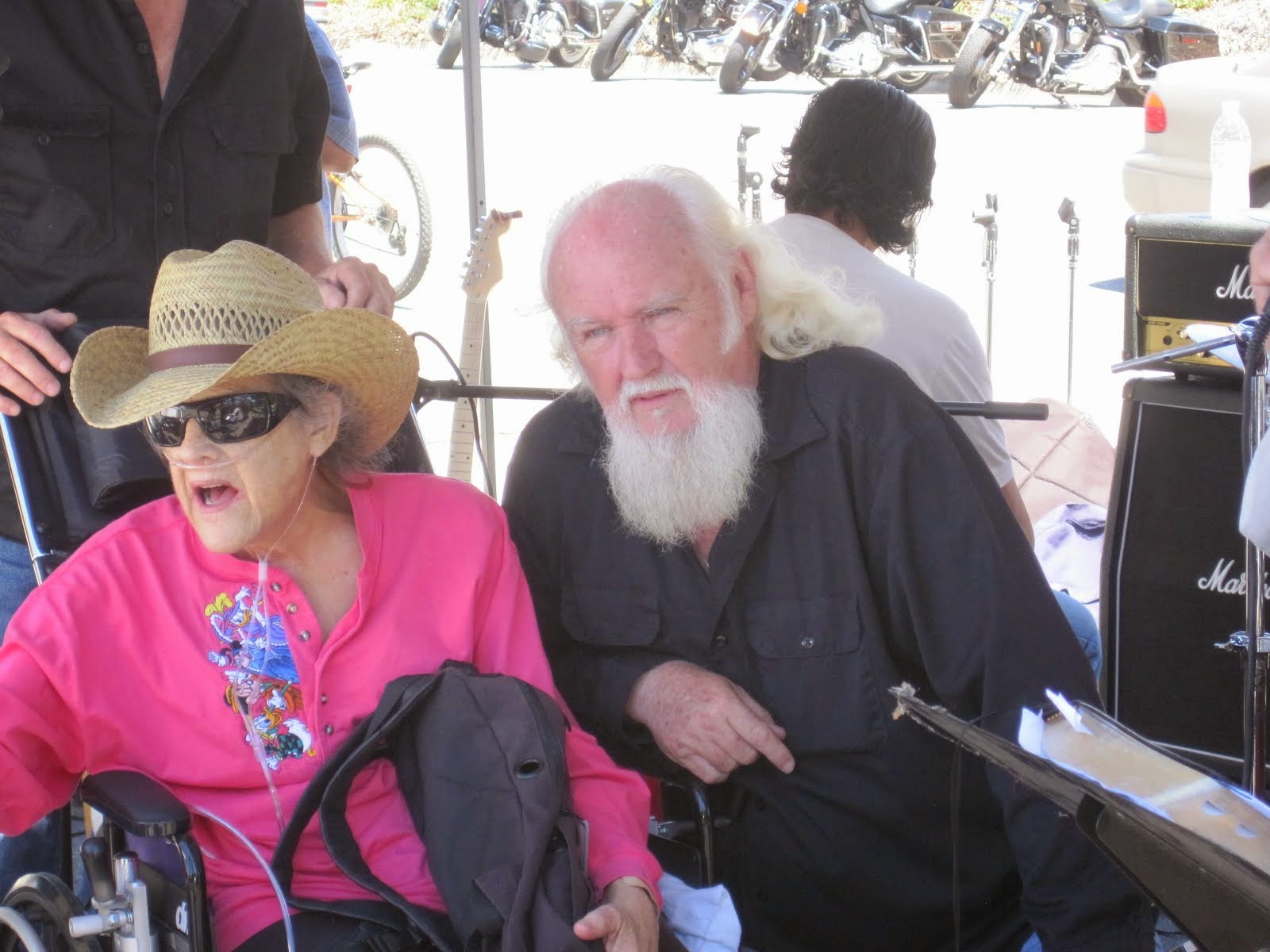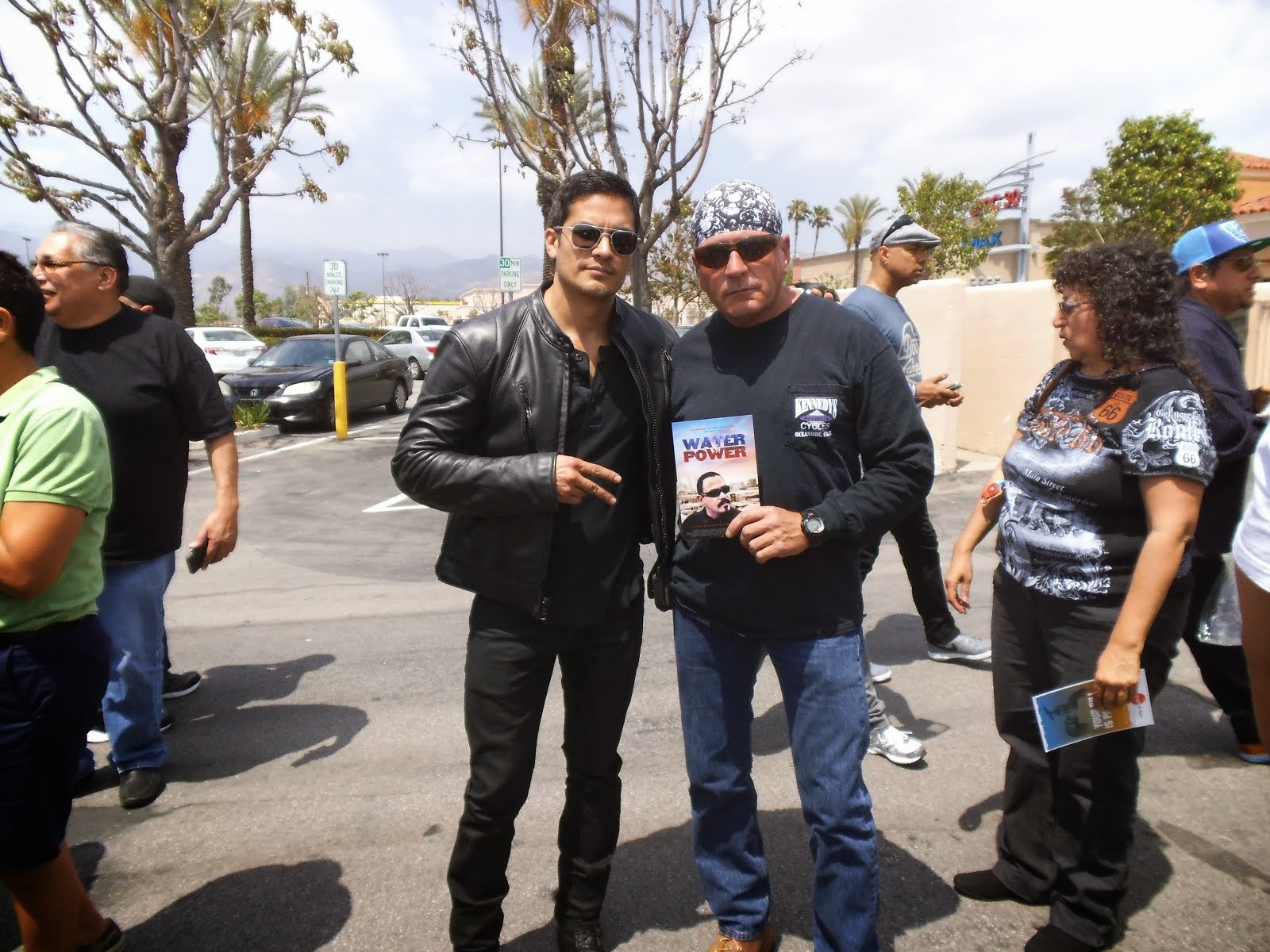OFF THE WIRE
http://www.lawcollective.org/
How to Report Police Misconduct
A great deal of police misconduct occurs, but goes unreported.1 This is a shame for several reasons:
• Reporting police misconduct is the first step in stopping it.
• Reporting police misconduct may help a victim win a
lawsuit against the officers who injured him.
• Reporting police misconduct may help show that a
defendant in a criminal case was coerced by officers
to confess or consent to a search.
One reason many people don’t report police misconduct they’ve seen or experienced, is that they’re not sure how to go about it. The following material will help you provide clear and powerful testimony, if you’re in a position to report police misconduct.
There are three tricks to being a good eyewitness:
1. Learn in advance what categories of information
will be relevant in court, so you can catch the right
details. That’s why you should familiarize yourself
with the Police Misconduct Report form now.
2. Describe what’s happening in words, while you’re
witnessing it. By mentally giving a running
commentary on the action, you make much stronger
memories.
3. Write down everything that happened. Don’t wait—
do it immediately after the incident. If at all
possible, make notes while you’re still at the scene,
especially about names and numbers.
Experiments have shown that our minds don’t normally retain very many details of our experiences.2 There’s also a myth in our society that when you see a shocking event, it’s branded into your memory and under the right circumstances (such as hypnosis) you’ll be able to play it back, just like a videotape. That’s rarely true. The reality is that if you’re very angry or afraid, your mind stores fewer of the details that you’re experiencing, because your attention is divided. For example, it’s not unusual for rape victims to find themselves unable to remember even their assailant’s race or hair color. So, if you’re experiencing or watching police violence or threats (which is naturally upsetting), you’ll have to concentrate carefully to see and remember the details. You’ll do a much better job if you say in your mind exactly what’s going on while you’re watching, the same as a sports announcer. It might sound like this:
Now there’s five, six, no seven cops, all piling on him! They’ve got him pinned to the ground. They’re handcuffing him. Okay, they’ve rolled him over on his back…and what are they doing? Oh, man, they’re spraying mace or something right in his face! He’s coughing and gagging. The cops keep on spraying him, over and over. He’s trying to twist away, but they’re all holding him down. Damn, they’ve used up that whole thing of spray on him—nothing more is coming out! He’s not breathing too good either, he’s straining for air, with his mouth wide open and his head thrown back… Whoa, that big cop just kicked him in the ribs!
If you have a cell phone with you, call a voice mail or a message machine and record your play-by-play description. And then make a copy of your message afterward, before it gets erased. Your “live coverage” could be very powerful evidence, both in court and in the media.3
Police Misconduct Report
The incident report form on the following pages was created by several lawyers,4 to help witnesses to and victims of police misconduct record what they experienced. Naturally, no one will be able to answer every single question on this form. The point is just to write down all the information you do have, before it fades away. And memories evaporate quickly. The best time to fill out the police misconduct report is within a few hours of the incident. Even by the next day, you’ll find it much harder to remember critical details. To do a good job, you need to be familiar with the form before you witness the incident. Otherwise, when it comes time to fill it out, you’ll be kicking yourself because you missed lots of information that you could’ve collected, if only you’d known it was important. So read through the police misconduct report form now. Better yet, practice actually filling out the form, using the material from the story Protect and Serve or your own experiences. Afterward, look at the Sample Police Misconduct Report describing the events in Protect and Serve. If you take the time to work with the police misconduct report in advance, you’ll get the outline of it in your head, so that when you’re at an incident, you’ll know just what information to seek out. (You can download the Police Misconduct Report.)
1. For more information on police misconduct and what can be done about it, see Suggested Reference Material on Police Misconduct.
2. To learn more about providing accurate eyewitness testimony, see Elizabeth F. Loftus, Eyewitness Testimony (Cambridge, MA: Harvard University Press, 1996.) It's important to know which details require greated concentration, such as remembering the features of someone of a different race, noticing other facts when someone's brandishing a weapon, and perceiving details during a stressful or violent incident.
3. Even if you do record the event using your cellphone, you must also fill out the police misconduct report right away. The questions in the report will help you remember material that you didn't happen to talk about while you were making your recording. The written report and the spoken recording will each make the other stronger.
4. The lawyers who designed this police misconduct report are: Katya Komisaruk, Osha Neumann, and Bill Simpich.
skip to main |
skip to sidebar




Bill & Annie

Art Hall & Rusty


NUFF SAID.......


































































OOHRAH

ONCE A MARINE,ALWAYS A MARINE

GIVING BACK


MOUNT SOLEDAD














BIKINI BIKE WASH AT SWEETWATER










FRIENDS





BILL,WILLIE G, PHILIP










GOOD FRIENDS


hanging out

brothers


GOOD FRIENDS

Good Friends

Hanging Out




Bill & Annie
Art Hall & Rusty
Art Hall & Rusty


NUFF SAID.......



















NUFF SAID......



























Mount Soledad




BALBOA NAVAL HOSPITAL
RUSTY DANNY

ANNIE KO PHILIP

PHILIP & ANNIE

OUT & ABOUT

OOHRAH...

OOHRAH
ONCE A MARINE,ALWAYS A MARINE

ONCE A MARINE,ALWAYS A MARINE
American Soldier Network GIVING BACK

GIVING BACK
CATHY & BILL
PHILIP & DANNY & BILL

MOUNT SOLEDAD
bills today
EMILIO & PHILIP
WATER & POWER
WATER & POWER
bootride2013



BIKINI BIKE WASH AT SWEETWATER







ILLUSION OPEN HOUSE

FRIENDS


GOOD FRIENDS



BILL,WILLIE G, PHILIP









GOOD FRIENDS

GOOD FRIENDS
Friends
- http://www.ehlinelaw.com/losangeles-motorcycleaccidentattorneys/
- Scotty westcoast-tbars.com
- Ashby C. Sorensen
- americansoldiernetwork.org
- blogtalkradio.com/hermis-live
- davidlabrava.com
- emiliorivera.com/
- http://kandymankustompaint.com
- http://pipelinept.com/
- http://womenmotorcyclist.com
- http://www.ehlinelaw.com
- https://ammo.com/
- SAN DIEGO CUSTOMS
- www.biggshd.com
- www.bighousecrew.net
- www.bikersinformationguide.com
- www.boltofca.org
- www.boltusa.org
- www.espinozasleather.com
- www.illusionmotorcycles.com
- www.kennedyscollateral.com
- www.kennedyscustomcycles.com
- www.listerinsurance.com
- www.sweetwaterharley.com

Hanging out

hanging out
Good Friends

brothers
GOOD FRIENDS

EMILIO & SCREWDRIVER

GOOD FRIENDS
Danny Trejo & Screwdriver

Good Friends
Navigation
Welcome to Bikers of America, Know Your Rights!
“THE BIKERS OF AMERICA, THE PHIL and BILL SHOW”,
A HARDCORE BIKER RIGHTS SHOW THAT HITS LIKE A BORED AND STROKED BIG TWIN!
ON LIVE TUESDAY'S & THURDAY'S AT 6 PM P.S.T.
9 PM E.S.T.
CATCH LIVE AND ARCHIVED SHOWS
FREE OF CHARGE AT...
BlogTalkRadio.com/BikersOfAmerica.
Two ways to listen on Tuesday & Thursday
1. Call in number - (347) 826-7753 ...
Listen live right from your phone!
2. Stream us live on your computer: http://www.blogtalkradio.com/bikersofamerica.
A HARDCORE BIKER RIGHTS SHOW THAT HITS LIKE A BORED AND STROKED BIG TWIN!
ON LIVE TUESDAY'S & THURDAY'S AT 6 PM P.S.T.
9 PM E.S.T.
CATCH LIVE AND ARCHIVED SHOWS
FREE OF CHARGE AT...
BlogTalkRadio.com/BikersOfAmerica.
Two ways to listen on Tuesday & Thursday
1. Call in number - (347) 826-7753 ...
Listen live right from your phone!
2. Stream us live on your computer: http://www.blogtalkradio.com/bikersofamerica.
Good Times
Hanging Out

Key Words
- about (3)
- contact (1)
- TENNESSEE AND THUNDER ON THE MOUNTAIN (1)
- thinking (1)
- upcoming shows (2)
Blog Archive
-
▼
2011
(5448)
-
▼
February
(470)
- solobiketour4cancer.com
- POCKET ATTY. - A Lawyer in your Pocket..
- Texas - Authorities strike at Bandidos, close meth...
- Drug raiders target Bandidos
- Texas - SAN ANTONIO - Raid: S.A. Bandidos 'a bunch...
- MYRTLE BEACH, SC -- Biker Bluesgrass Fest kicks of...
- Noise ordinance back to square one, New Hampshire ...
- It's a bird! It's a spy! It's both, Backed by the ...
- Anti Helmet Choice Testimony in Nebraska
- Hells Angels to plead not guilty
- New York Freedom Riders New York Legislation and n...
- some pro helmet case questions ...(rebuttal to Har...
- New Kansas City, Mo - Motorcycle Accident Legisla...
- LUCKY`S RIDE FOR LUEKEMIA
- 'Dead Red Bill' Allows Motorcycles To Run Red Ligh...
- Australia - sydney - (Third Rock from the Sun) Hel...
- FLORIDA: Motorcycle only checkpoints stir controversy
- Soldier impersonators target women on Facebook, T...
- Maine, WATERVILLE -- Canaan biker vindicated, wins...
- MI: Readers gear up To push repeal of helmet law
- Australia - The great bikie defection
- WEARE, NEW HAMPSHIRE POLICE CHARGE CITIZEN WHO REC...
- INDIANA - A Life Lived: Running bars and helping n...
- For some reason, this does not give me the warm fu...
- Atlanta, Ga - Court filing: Depression, accident l...
- Definition of probable cause
- some pro helmet case questions ...
- HELMET LAW FACTS
- Newark, NJ - East Orange man alleges Newark police...
- Australia - Bikie Wars: Police seize explosives fr...
- CHECK THE "EVENTS" PAGE ON OUR WEBSITE AT abateloc...
- The Walmart Of Weed? Medical Marijuana Emporium He...
- PLEASE NOTE NEW DATE!!! I know it's early, but kin...
- Canada - Two Hells Angels jailed
- CANADA - Bikers turned informants sentenced to lif...
- here is the pro helmet case...
- New Jersey - Hightstown officials dispute State Po...
- We should send this to legislators here.... Kansas...
- $7,000,000 (that's seven million !) Settlement Aga...
- Police push for gang patch ban in Whangarei
- State of Georgia may utilize federal grant for mot...
- Another reason we don't like politicians... at times!
- LIQUID DYNAMITE
- LDA v Paralegal
- The FBI Gets Their Terrorist,,,
- CHARLOTTE, NC - SWAT Officer Dies After Suffering ...
- California - SAN DIEGO - Man pleads guilty to mans...
- Daytona-bound bikers protest State Patrol checkpoints
- Letter to the Gov of Georgia
- Kansas House Approves Bill Allowing Motorcycles to...
- Ticket Camera Photos Not Holding Up In California ...
- WA introduces HB1984 to FULLY REPEAL HELMET LAW
- Daytona-bound bikers protest State Patrol checkpoints
- ABATE of Wisconsin's 2011 Lobby Day
- Georgia - BIKES: Riders Asked To Oppose Georgia Mo...
- if you're from California, the Legislature needs t...
- ILLINOIS: WE OPPOSE THESE BILLS
- Ontario, Canada - SIU letters detail frustration w...
- Kansas - House Approves Bill Allowing Motorcycles...
- Ontario, Canada - Number of police complaints incr...
- Canada - Pair turn informants, guilty in homicide ...
- Cambridge — Mass - Fight breaks out at Harvard Squ...
- Australia - Fifth man charged over parlour assault
- STOPPING DISTANCE
- MASSACHUSETTS: Wilmington Shriner's Bike Show
- CHARLESTON, W.Va. - Ex-motorcycle club leader gets...
- Australia - Bikie nabbed
- The Teachings that the Egyptians Got to Revolt - m...
- Australia - Unlawful bikers in cop blitz
- New Zealand - Be brave, ban patches, say police
- Ohio - Sandusky- Martin says biker club killed Gibson
- EDITORIAL: Oregon - Don’t weaken helmet law A bill...
- Florida Toll Road Sued for Holding Motorists Hostage
- Florida - Scott Russell To Race Harley-Davidson XR...
- Wisconsin - Man gets probation in Franklin tavern...
- Australia - Moving tribute to founding Gypsy Joker...
- Scott County, Iowa - Jury finds James Salkil guilt...
- New Zealand - Ban gang patches in our town
- You think English is easy???
- Need Assistance
- Nevada - Brothels fear Reid will seek their demise..
- Australia - High-ranking OMCG member charged over ...
- Sen Harry Reid addresses Nevada State Legislature..
- Our Bill to stop MOTORCYCLES' ONLY ROADSTOPS AB 10...
- AMA ALERT: Congressional Motorcycle Caucus gains n...
- Australia - Three Notorious bikie gang members ch...
- Massachusettes State Tropper Discharged after harr...
- PA: City officer faces trial in motorcycle crash d...
- Arizona - EXCLUSIVE: CBS 5 Invited To Attend Hells...
- The 2nd annual Biker benefit for Feeding America -...
- Canada - Agency gets green light to use wiretaps ...
- NC: Choice battles emerge in Legislature
- Australia - Bikies challenge protest fines....
- Edmonton Canada: Noise law fails first test in cou...
- BOLT and the California Compromise BIll.
- Bikerlowdown B.A.D. biker rights panel
- Tampa, FL -- Plant City man faces charges in deadl...
- PINK BIKER CHIC EMPOWERS WOMEN and VETERANS
- Australia - Bikie jailed over axe attack
- Australia - Sydney bikie loses parking fine fight.
-
▼
February
(470)
Bikers of America, Know Your Rights!... Brought to you by Phil and Bill
Philip, a.k.a Screwdriver, is a proud member of Bikers of Lesser Tolerance, and the Left Coast Rep
of B.A.D (Bikers Against Discrimination) along with Bill is a biker rights activist and also a B.A.D Rep, as well, owner of Kennedy's Custom Cycles
